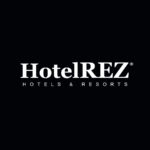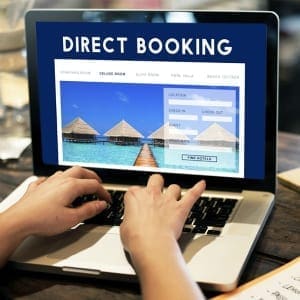 When you have a team that manages the financial wellbeing of your hotel across the dimensions of all the complex and different departments, you have a developed an amazing power tool. One key crossover point is to have those department leaders and assistants know their key business indicator and apply it to their zero-based expenses and labor. The KBI power tool combines their costs with a measurable, trackable and meaningful volume number. Read on to find out how you can create and use these in your hotel.
When you have a team that manages the financial wellbeing of your hotel across the dimensions of all the complex and different departments, you have a developed an amazing power tool. One key crossover point is to have those department leaders and assistants know their key business indicator and apply it to their zero-based expenses and labor. The KBI power tool combines their costs with a measurable, trackable and meaningful volume number. Read on to find out how you can create and use these in your hotel.
Dashboards are relatively new and offer the hotel executive key business indicator visibility, time savings in report reading, a quick comparison to plan, and if properly set up, real time information on certain business measurements. As our world is increasingly connected and plugged in we can see our property revenues, the corresponding statistics and perhaps even direct payroll costs in real time, each day. So these dashboards are great for the executive or owner to see from the top down what’s happening at a macro level inside their enterprise. Waking up every morning and being able to see the company’s previous days and month to date sales in total, by region and even by hotel and department is pretty impressive and useful.
However, I throw a large portion of caution in here as this is only approximately half of the picture of your hotels’ financial performance. What about the other half?
The other half of the picture is where the game is won or lost. In order to get the bottom line profit picture each month, we need to close the books; run all the sub ledgers, do the accruals, book the franchise or head office invoices, determine the cost of sales, allocate certain expenses, book the pre-paids’, etc, etc. We have all experienced months with strong revenues only to see the final bottom line result be less than planned because some of these cost items showed up and they were unexpected or they had a bigger impact than we planned. So what can we do about this?
What can we do inside our hotel’s to manage the costs and expenses we cannot see in total, in real time? The answer is taking a micro approach by using the leadership team to manage key business indicators that we can create. In order to establish a new system to do the tracking of the micro KBI’s we need to develop a different strategy. Systems are beautiful because if the system does not work, I tweak the system, not the people. This is a very important distinction. In many organizations, we hear the people are the problem when in reality it’s the system that’s producing poor results.
A key part of this approach is to have a culture of ownership inside the P&L. Designing a system at the micro level means every line of my financial statement has an owner. We take the P&L apart and we assign an owner to every line of revenue, expense, payroll and cost of goods. These owners are not the accounting management. Once we know the lines and the assigned managers we make agreements with those managers to help support them so they can truly own those lines. Training, information access, a system to follow and regular meaningful communication on these lines ensures that they get the attention they deserve.
If we create a proper culture that supports and nurtures this the leaders will want to do this work. It’s only when we take a half-baked vague approach that leaves the department manager holding the bag for results that he or she really didn’t own in the first place that we create finger pointing and an environment that someone in my career coined, “management by embarrassment”.
This new system takes a little practice and commitment but once it has been established you truly have a huge asset in your business. Another added benefit is your managers and leaders will love it. They really want to be part of the business machine and get as close as possible to the engine room but they won’t do this if they don’t trust you to truly support them. Be there when it’s a mess, help them get it organized, deliver on your agreements and always be developing, growing and supporting your team.
My question always is, what’s the process and the metric for the line or department or even division manager? What’s their dashboard or KBI that they can easily forecast, track and measure against to ensure their piece of the enterprise is performing well? If they could start every day, week and month and know the one or two key measures that equal financial success in each area of my business, I have simplified my measurement process considerably.
We have accomplished this quite nicely with guest service and the comparison I like to use is as follows: my front office managers two guest service KBI’s are check in efficiency and feeling welcomed. Nail these one or two key measures and the rest comes together. Consolidate my micro results with a couple of dozen other key managers in my hotel and the end result is extremely solid, and better still we produce a financial statement that makes sense with few surprises. Giving my management team the one-two punch with a system that is micro in nature combined with their key business indicator takes the large and seemingly untamable masses of data and information and turns it on its head.
Inside a full-service hotel, we have an average of 50 key metrics that need to be tracked daily by 30-40 managers. Every hotel regardless of size or scale, franchised or branded, independent or chain, can do this. Each manager or assistant manager gets as few as one or two numbers that directly pertains to their specific area. These are their key business indicators, KBI’s. They forecast the upcoming months’ revenues, expenses, and payroll and then track throughout the month their progress comparing the revenues and statistics to these cost items.
These are granular in nature but the compilation of all of these inside your hotel throughout its multiple departments is powerful stuff. They take the key line items they are responsible for and turn those into meaningful KBI’s for their area. The great thing about these is the daily reporting in your hotel can easily be set up to highlight these revenues and statistics. The key here is managing the P&L line item of expense or payroll by forecasting and tracking it throughout the month and comparing it to the revenue or statistic that most closely corresponds. This takes the seemingly mundane task of controlling your expenses to a whole new level. Now your leaders and managers are comparing the revenues and statistics to their costs in real time.
This approach is a fundamental shift that opens up an entirely new way of managing by giving your leaders specific measurement for their area and a straight forward system to follow that has them set up for success because they own it and it takes into account the volume of business relative to the costs.
Here are a few KBI’s that every good hotel executive and manager knows are key to a successful month end profit picture.
- Room Attendants – hours worked per room occupied. Note here we are not measuring the payroll cost per room occupied as that’s not something my housekeeping team can control. The team has no control over wage rates, supplemental payroll or benefit costs. They do however control the schedule.
- Housekeeping (non room attendants) Hours worked per room occupied. Again I’m not focusing on payroll cost, but the hours are what my team can manage, track and measure.
- Guest Supplies – Cost per room occupied. What is my total forecasted spend, what’s the forecasted volume of room sales. My team tracks both throughout the month and stays on track to the CPOR regardless of volume changes.
- Laundry Costs – Laundry expense per room occupied – hours worked per room occupied in the laundry and the pounds of laundry per room occupied. This works for in house laundry or outsourced. Track the pounds every day and compare this to the forecasted and actual volume of rooms sold.
- Kitchen – hours worked per cover served for all outlets and banquets.
- Kitchen – food cost per cover served, the food ordered in the month divided by the covers served. If the chef and his team are tracking this each day, food cost will never be a surprise.
- Stewarding – hours worked per cover served for all outlets and banquets.
- Stewarding – glassware, china, silverware; costs per cover and the same for breakage.
- F&B Outlets – hours worked per cover served for all outlets.
- Golf Operation – hours worked per round played, golf operations and golf maintenance.
- Spa – hours worked per treatment
- A&G – credit card commissions as a percentage of revenue month to date. Who wants to pay their 200k master account on their American Express? This needs to be part of the landscape that we manage.
- Energy – water, electricity, natural gas, etc. Units consumed per room occupied. When we track these monster expenses we can then ask ourselves meaningful questions when they have variances. Tracking the volume might seem like a trivial thing to do but it means you now have a cost and volume relationship and you have created a meaningful measurement.
I could go on forever. Use your imagination and you can create a meaningful KBI for all areas of your business. Absolutely 100% of which can be designed into your financial statements, daily reports and if necessary, ad-hoc analysis. Data wins and you can create your hotel’s arsenal of power tools.
Here is a fun and basic example. Marcia is the linen room manager. She has two numbers to forecast and track. Linen purchases and outside laundry costs. Let’s take the linen purchases first. The forecast is for $5000 in new linen purchases and 10,000 occupied rooms. She can spend$.50 for every room occupied. She keeps track of the occupancy forecast and makes two linen orders per month. She sees the month is trending a bit soft in occupancy so she drops $500 off the second order. Linen cost per room occupied is in line. Notice we don’t fixate on the dollars, it’s the cost per unit that Marcia tracks first.
Next it’s the outside laundry costs. The hotel contract is for $.30 per pound with their vendor and the average room uses 13 pounds and this includes the pool. Daily she gets the poundage reports form her laundry vendor and does the math against the rooms occupied and she zeroes in on her $.30. Daily tracking is the key. Wait ten days to track it and it’s game over. If she is trending high she can remind the room attendants to be vigilant on the environmental program or perhaps it’s time remove the third towel as the heavier transient summer is behind us.
Marcia takes a lot of pride in her two KBI’s. You know it and most importantly for your business and its health, she knows it. Replicate this in all areas and you have created an army capable of producing superior operating results. The next time your facing head winds in your business you can now ask your army to help. Now they have something to work with, a meaningful measurement that compares volumes to costs, not just dollars. Managing flow through now has a real meaningful micro process.
The above examples are but a few of the KBI’s that you can create and manage. What is instrumental here is that every area needs to be defined. What is the key measure and how is it tracked, and best of all who on your team has made an agreement and takes responsibility to track it and use it? If your answer is the finance department, you just failed the exam. Empower your department managers and teams to own their financial piece. Give them the training, resources and support to do this. The finance department is a key instrument that can really help. Their efficient processing and reporting is necessary for consistent and reliable information, however it’s up to the managers and leaders in all areas of your hotel to take ownership of their KBI’s. This only happens when you set the tone from the top and create the proper managerial environment. That’s evolved financial leadership. That’s an amazing power tool.
If you get creative you can design the KBI’s in your hotel at exactly the right and impactful level. Approach your leaders with agreements and not expectations and they will want to do this. Managing your hotel from the bottom up is the way to go. What are your 50 key metrics?















